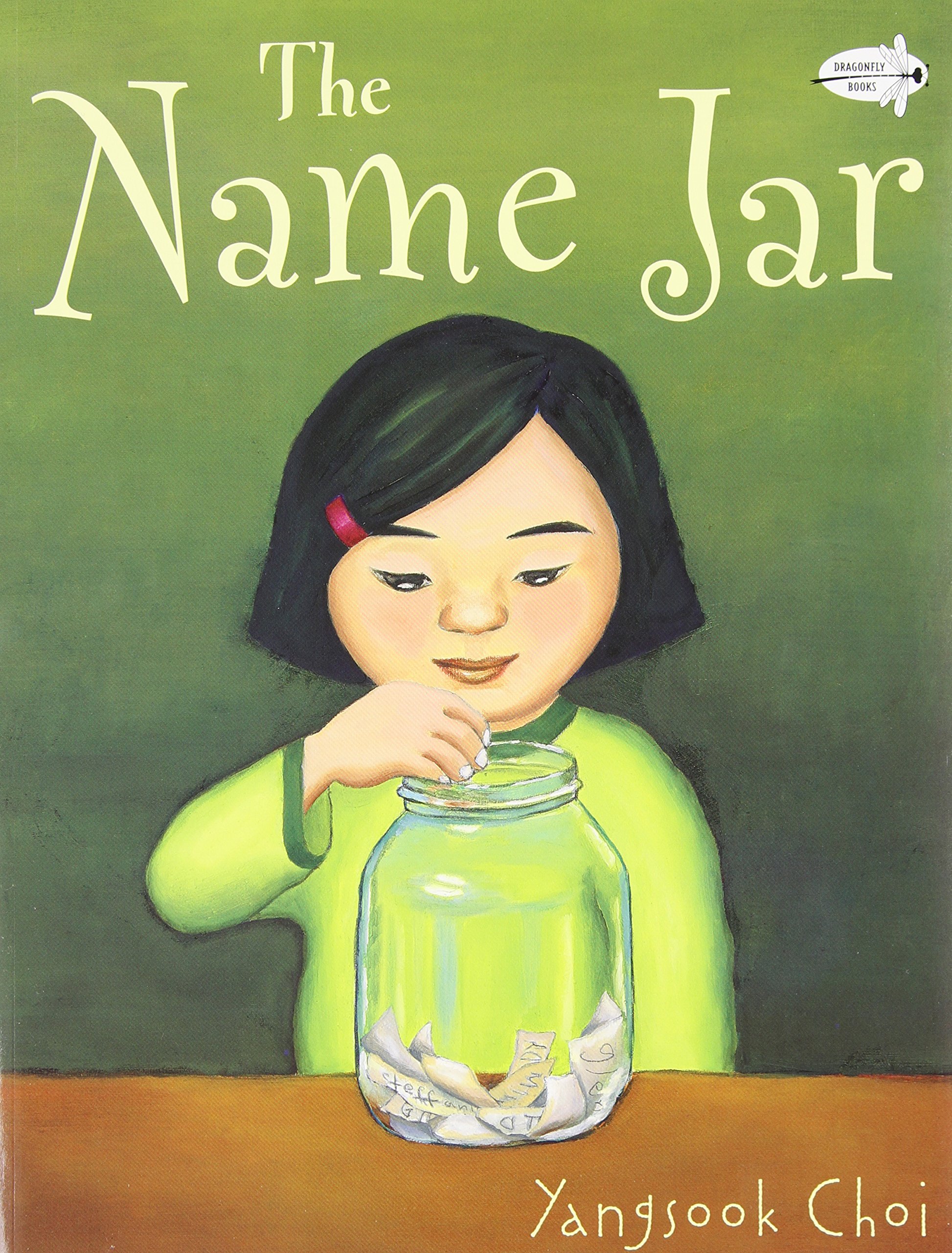Tackling issues of assimilation, identity, and acceptance, The Name Jar by Yangsook Choi, tells the story of a young Korean Girl, Unhei, who moves to America and considers adopting an American name. Choi uses vibrant illustrations that fill the page to help reader’s understand Unhei’s journey for self-identity and acceptance in her new environment. On Unhei’s first day at an American school, she feels embarrassed and ashamed when kids on the bus can’t say her name. She decides that instead of introducing herself to her new classmates, she will wait a week and pick a new, American name to introduce herself with. Unhei is surprised the next day when she finds a jar on her desk full of names that have been suggested by her classmates. Ultimately, Unhei decides that she will keep her own name, and introduces herself to the class, using both the English spelling and Korean characters to show her classmates who she is. Choi’s book gives us a look at the isolation a child can feel when they are entering a new school in a new country, however, Choi also provides a good model for students to follow in helping a new student feel acceptance in a new school.
In today’s classroom, it is quite common for new students from different countries to join a classroom, and Choi’s book provides a good starting point for students to discuss how they can welcome a new student into their classroom. The book also help students to understand what their new classmate might be going through. It can be uncomfortable for a classroom teacher to explain why a student from another country may have an especially hard time adjusting because it requires a frank discussion about cultural norms and, sometimes, race. Mankiw & Strasser (2013) refer to these hard to discuss topics as “tender topics” and write, “It is important to view tender topics not as problems, but as subjects that are part of the everyday lives of children and families” (p. 85). However, Mankiw & Strasser suggest that one way to overcome this discomfort in the classroom is to use children’s literature as a starting point. “Using elements of critical literacy as you read to children supports exploration of tender topics” (Mankiw & Strasser, 2013, p. 85). Thibault (2004) discusses both critical literacy and bibliotherapy in her article. Thibault (2004) warns, “It is essential that you use the book not as a substitute but as a catalyst for discussion.” Teachers who know that a new student will be joining the class can use The Name Jar, to facilitate a discussion with the class on ways they can welcome a new student into the classroom, and to address things that the new student might be going through as they enter a new environment which helps to promote empathy among all students.
References
Choi, Y. (2001). The name jar. New York: Dragonfly Books.
Mankiw, S. & Strasser, J. (2013). Tender topics: Exploring sensative issues with pre-K through first grade children through read-alouds. Young children. March, 84-89.
Thibault, M. (2004). Childrens literature promotes understanding. Learn NC. Retrieved from http://www.learnnc.org/lp/pages/635.

No comments:
Post a Comment